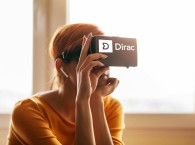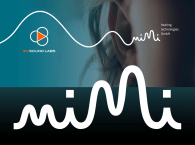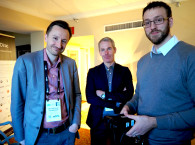
It’s no secret that HRTFs (head-related transfer functions) that consider the isolated movements of the head in relation to the human torso, are key to binaural perception, using headphone reproduction or immersive setups with speakers in combination with digital signal processing. Dirac Research says that the current industry-standard HRTFs incorrectly assume that the body and head must always move in tandem.
“Simultaneous visual and aural immersion is the linchpin of a true virtual reality experience,” explains Dr. Mathias Johansson, founder and CEO of Dirac Research. “It’s what separates reality, experienced virtually, from an obvious representation of such. Until today, the limitations of the 3D audio technology used in VR/ AR programming have prevented this true immersion from being created, rendering a gaming, entertainment, or educational VR experience that is fundamentally flawed, with too many reminders that true reality exists elsewhere. With Dynamic 3D Audio, these limitations no longer exist. True simultaneous visual and aural immersion is now a certain reality within the virtual experience.”

of Dirac Research
The torso-head dilemma isn’t the only immersion limitation resolved by Dirac’s Dynamic 3D Audio platform. HRTFs are a function of how one’s ear perceives a particular sound from a point in space. Height, cranial proportions, and ear dimensions, among other factors, all play a role in one’s individualized HRTF that’s as unique as a fingerprint. That said, to create a completely immersive 3D audio experience, the industry standard relies on the “individualized” HRTF measurement of each listener — a time-consuming and laborious process that ultimately lacks scalability.
“This need to individualize HRTFs to create immersive audio has historically been a major industry roadblock,” continues Johansson. “However, we’ve developed a new, highly-sophisticated HRTF measurement process that’s exponentially more free from noise and error compared to existing approaches. And, excitingly, when this measurement process is combined with Dynamic HRTFs, the benefits of individualization become virtually immaterial and ultimately obsolete.”
While CES 2017 will mark Dirac’s official entry into the AR/ VR space, the company has been a leader in platform-optimized sound enhancement technology for more than 15 years, serving a global network of customers in the Mobile, Home, Professional, and Automotive channels. The company’s list of clients includes a blue chip portfolio of technology leaders such as Rolls Royce, Bentley, BMW, Volvo, Harman, Pioneer, OPPO, Arcam, Datasat, Huawei, OnePlus, and Xiaomi.
“At Dirac, we’re passionate about sound,” Johansson concludes. “No matter where or how people enjoy their favourite audio media, we empower their audio system to push beyond its physical limitations to deliver the best possible listening experience. We transform the car into a mobile HiFi room, make headphone listening a fully panoramic experience, and turn mobile devices into pocket-size entertainment centers. We challenge the boundaries of science to make possible what was once impossible. Today, with the introduction of Dynamic 3D Audio, we are doing it again for the AR/VR marketplace.”
The breakthrough Dynamic 3D Audio platform will be demoed at CES 2017, Venetian Suite 31-215, between January 5-8, 2017.
www.dirac.com






